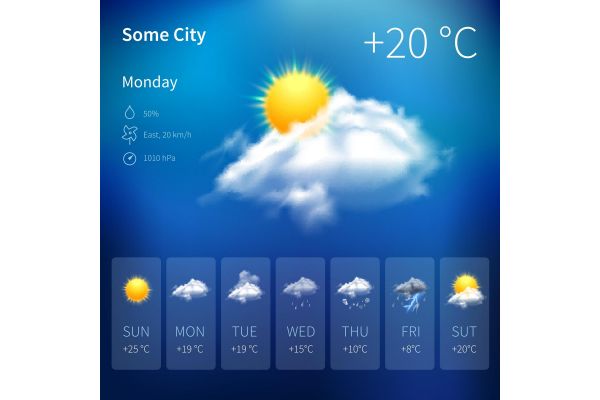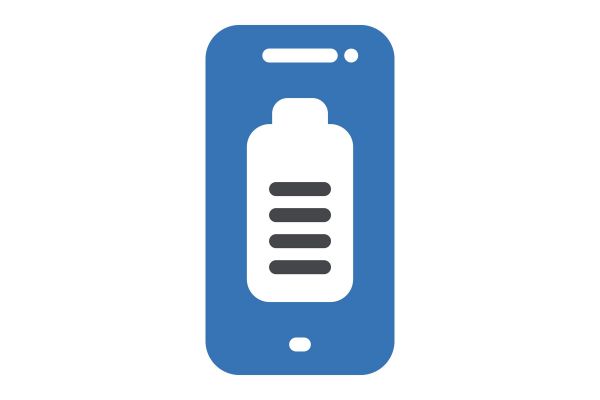Disclaimer: This post may contain affiliate links, meaning we get a small commission if you make a purchase through our links, at no cost to you. For more information, please visit our Disclaimer Page.
Widgets may sound like funny little things based on the word alone, but they can be convenient, useful tools when you need quick access to information. You’ll find widgets on most mobile devices, especially smartphones and tablets. Popular mobile platforms such as Android or iOS will make use of widgets, though they may do so in different ways.
Most mobile users should already be familiar with apps. Although applications are similar to widgets, they are not quite the same thing. It might be helpful to think of widgets as smaller, dedicated programs that run for very specific purposes all the time that your phone is on.
Usually, you can get the same kind of information from apps as you can from widgets, so some users might wonder what the point of having the latter on a mobile device is. We will go over this topic in greater detail below, and we will further define the differences between apps and widgets when we do so.
Additionally, we will cover whether widgets might make a phone perform slowly, how much space they could take up in storage, and if they happen to drain the battery when they are active.
Table of Contents
What Is the Point of Widgets?
It may be helpful to think of widgets as things that work with dedicated apps in order to show you more focused information. You can also see some of that information without needing to open the app itself. This can save you some time, and it can cut out any unnecessary information in which you might not be interested.
There is a lot of flexibility here, so how a person might use a widget is up to them. Before we get too much deeper into widgets, we should note that they are not the same as shortcut icons on your home screen. Shortcut icons are just ways to allow you to open apps with a single click.
They work pretty much the same way that any shortcut icon on your regular desktop computer would. Some people may refer to these shortcuts as widgets, but that is not true.
Widgets do similar things for the iPhone or Android systems, but each one may have proprietary widgets that you cannot get on the other OS. Having said that, there may be widgets that Apple might use under one name, and you might find one that does the same action under another name for Android.
For example, the iPhone’s ‘Launcher’ widget is a customizable one that gives you the power to open or start several kinds of apps with just one click. Because of this, you can also set it to make calls, send messages, or open FaceTime. Similarly, ‘Widgetsmith’ can be a great way to schedule various widgets within the iOS to display particular information that is important to you at different times during the day.
The ‘Smart Stack’ operates on some of the same principles, but it tries to show you different info or apps depending on how you use your phone throughout the day. For example, it might give you a weather update in the morning and show podcasts you want to catch up on before bed.
Android may use different widgets, but many of them will perform some of the functions that we talked about for the iOS above. There are weather widgets that will give you a continuous reading on the temperature right from your home screen. If you dive deeper, you can get access to a radar and a forecast as well.
A battery widget will give you easy access to information about the charge your phone or other mobile device has. This can include the percentage it has left, stats for the current cycle since it has been unplugged, charging speed when it is plugged in, and more.
If you don’t like the built-in calendar options that you get with Android, there are widgets that allow you to make a customized scheduler that you can use.
With these, you can download custom themes, create options to hide declined events, categorize reminders, and much more. You can even get custom widget makers that work with a lot of the apps you already have to make widgets of your own.
What’s the Difference Between Apps and Widgets?
Apps and widgets share some similarities, and you may hear some people refer to widgets as “apps” simply out of convenience. Although they are related, the two things are different, and they are not technically interchangeable.
You probably know that “app” is just shorthand for application. An application is a specific type of program, but not all programs are necessarily applications. A standard program is something that will help your device perform tasks or execute commands, usually as a direct way to benefit you.
An application helps you as the device user perform specific activities. Once again, programs and apps are related and quite similar, but they are not exact copies of each other. Apps and widgets work along the same lines.
Widgets are like applications that remain in an active state on your home screen. They are always on, updating information as needed in order to show you basic, more concentrated data. It is good to remember that your home screen can have multiple panels on it, and each panel can have different widgets that are all active and pulling data at the same time.
While some of your applications could remain active in the background, you can close these by going to the appropriate window and swiping them to the side. Furthermore, even apps that are running in the background don’t tend to use their full functionality. Widgets do stay on and active when you have them up.
In most cases, they will work with parent apps to pull more specific data, and they will then display that focused data for your convenience. They do all of this without the need for you to open an app at all, and that is their main difference from applications.
Can Widgets Make a Phone Slower?
Widgets have the potential to slow down your phone. However, it isn’t necessarily a given that they will do so. Whether they make your phone slower can depend on a few factors. First, how many widgets you have added to your home screen could be something to consider.
If your phone needs to display several widgets, particularly those that rely heavily on graphics to show data, you might notice some negative impact on the device’s performance. If so, you can try to decrease the overall number of widgets you’ve dedicated to the home screen. Once done, you may wish to restart the phone to see if there is any noticeable improvement.
The other major factor to keep in mind is in what the widgets do, and it is important to pay particular regard to how they do it. A widget that is local to the phone should not have any noticeable impact on the device’s performance or speed.
However, most widgets are not local, meaning that they need to ping the internet regularly in order to check for information they might want to update for you. In doing this, they use more system resources and memory than local widgets.
Therefore, if you have several of these widgets that each send out their own pings to the internet quite often, you may notice some decrease in the performance of your phone. You can try decreasing the number of these sorts of widgets on your screen, or you may be able to set how often each one checks for new information on the internet.
Do Widgets Take Up Storage?
Widgets can take up some storage space on your phone or other device. Simply put, they need to have some files installed on your phone in order to do the jobs you want them to do. You should see them along with all of your other programs listed in the ‘Applications’ subsection of your phone’s storage.
From here, you can also see just how much space they need in order to operate effectively. Another thing to keep in mind is the system memory that they use. This is also something you can view when you open them in the app screen.
You should see data related to how much memory the widget has used since the last refresh or charge cycle. Having all of the memory taken up is another thing that might cause your phone to seem like it is performing poorly, too.
Do Widgets Drain Battery?
Yes, widgets do drain the battery on your mobile device. How much battery each one drains will depend on how many of them are running at once, which resources they need to use, and how often they go to the internet to search for updated information.
Widgets work in concert with apps, meaning that the apps they rely on will need to run some processes in the background. All of these things can contribute to some drain on the battery, but it is a normal part of the phone’s operation, and you shouldn’t notice excessive battery drain just from widgets alone.
Conclusion
Developers of mobile devices are almost always coming up with new ways to make them more convenient and easy to use. Widgets have been around for a long time, and they remain one of the most useful aspects of major mobile platforms.
With them, users have access to specific information in its most current form, and it is all right there on the home screen. Too many widgets might slow down the phone, but having a few dedicated ones at your fingertips can make your mobile platform experience more streamlined.


